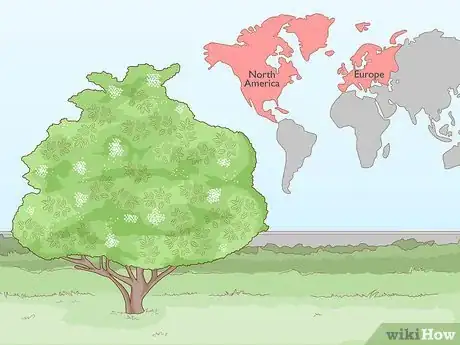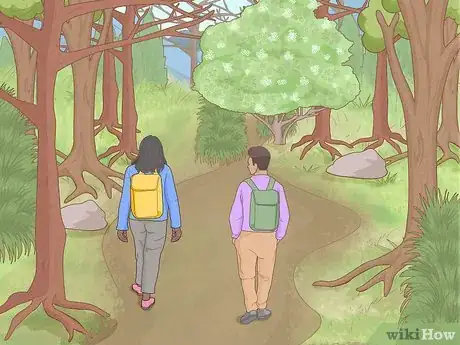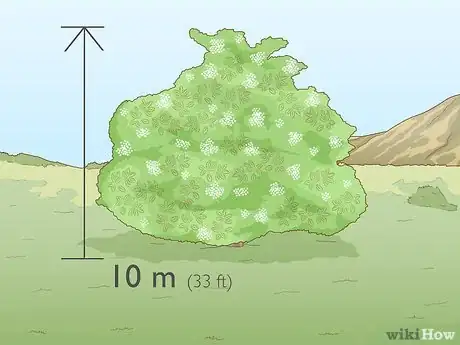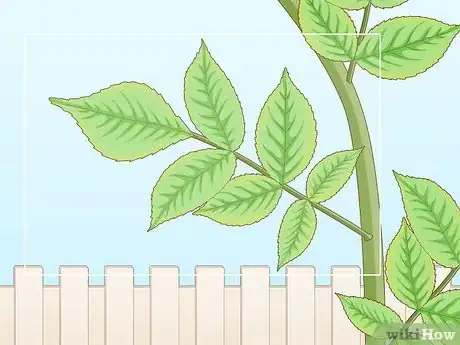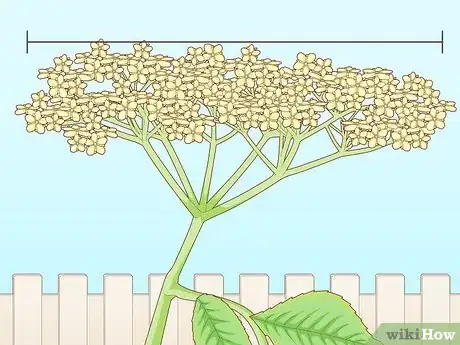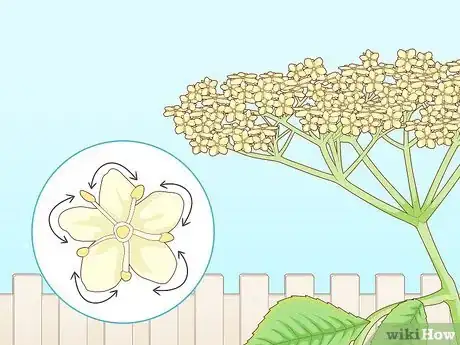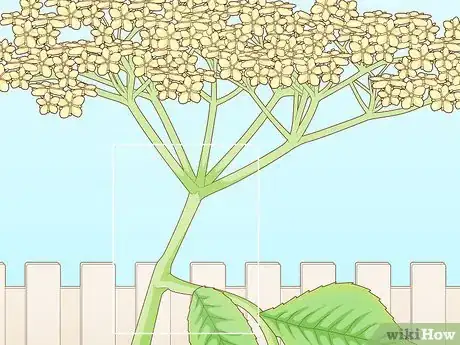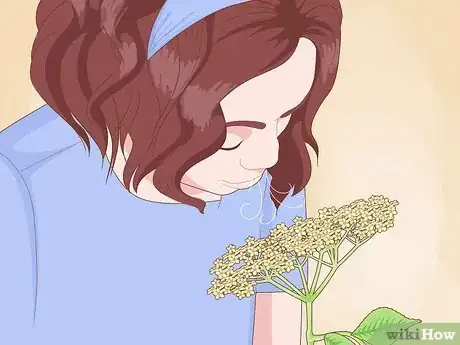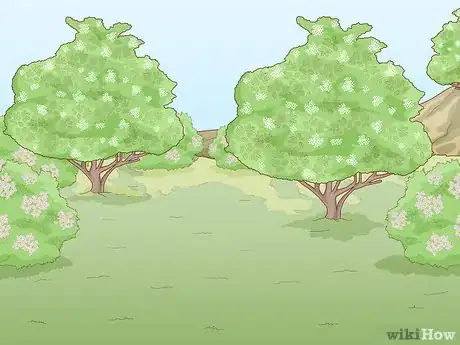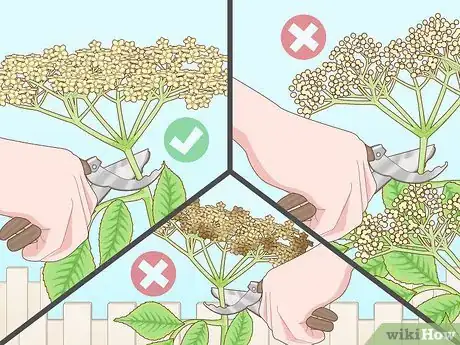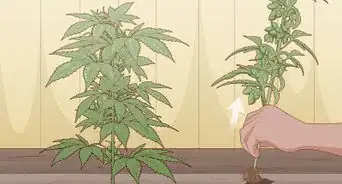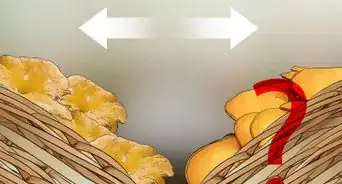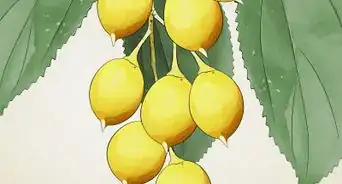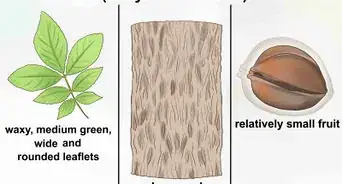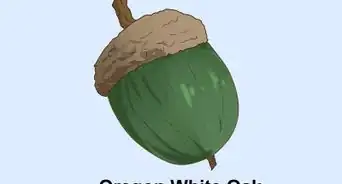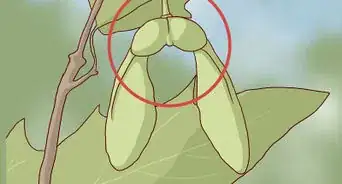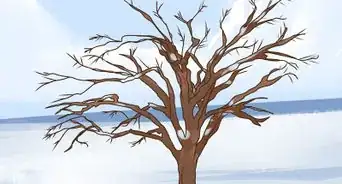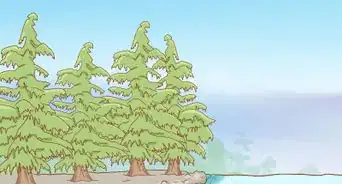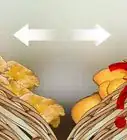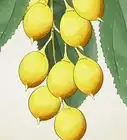This article was co-authored by wikiHow Staff. Our trained team of editors and researchers validate articles for accuracy and comprehensiveness. wikiHow's Content Management Team carefully monitors the work from our editorial staff to ensure that each article is backed by trusted research and meets our high quality standards.
This article has been viewed 13,402 times.
Learn more...
Elderflower is the name for the flowers that grow from the elder tree, which later turn into elderberries. It has been used for centuries for its medicinal properties to treat everything from colds to chronic pain. It is also popular in the culinary world and is commonly used to make elderflower cordial or in summer dessert dishes. Learn when and where to find flowering elder trees, how to identify the flowers, and then forage them responsibly to use them in home remedies or different recipes.
Steps
Finding Flowering Elder Trees
-
1Search for elder trees in regions with temperate and subtropical climates. Elder trees, the trees that bear elderflower, are found across temperate and subtropical regions of the world, especially in North America and Europe. Start looking for elder trees if you live in such a region.[1]
- There are different species of closely-related elder trees in North America and Europe, although the European species can also be found in some areas of North America. Both varieties can be found and identified the same way.
Tip: Different names for the elder tree include elderberry, black elder, European elder, European elderberry, European black elder, ellhorn, pipetree, bore tree, eller, and holler.
-
2Look for flowering elder trees starting in late May or early June. Elder trees flower for about 6 weeks in the early summer, usually starting in May or June. Start your hunt for them during this timeframe when you will be able to spot the flowers.[2]
- Elder trees are especially common across the UK, where they start to bloom in late May and are usually in full flower during June.
Advertisement -
3Check parks, woodlands, forests, hedgerows, gardens, and roadsides. Start walking around wooded and vegetated areas that you have access to in order to begin your search for elder trees. Take a trip out to the countryside if you live in a city where you can’t find any such areas.[3]
- Avoid elder trees that are by heavily-travelled roads with lots of traffic fumes. The flowers will not be good for foraging. Trees by a country roadside with light traffic are fine.
-
4Find scraggly trees with clusters of small cream-colored flowers. Elder trees are technically shrubs, so they don’t have a single main trunk as trees do. Look for bush-like trees with several trunks that come up out of the ground, each with many branches that give it a scraggly look, and that have clusters of creamy-white flowers sprouting from them.[4]
- Elder trees can grow up to about 10 m (33 ft) tall, although some remain as small as 10 m (33 ft) and look much more like shrubs than trees.
-
5Look to see if the leaves have serrated edges and are in clusters of 5-7 leaves. Each twig has 1 leaf at the very tip, and 2-3 pairs of leaves below it along the sides. Count the leaves on the twig below the flowers to make sure there are 5-7 in total, then look at the edges of the leaves closely to see if they are serrated.[5]
- The twigs with leaves branch out laterally from the main stems below the flower clusters.
- The leaves may or may not have a light fuzz on the underside.
Identifying the Flowers
-
1Look at the flowers closely to verify that they are growing from the elder tree. There are several other common plants with similar clusters of white flowers that can be confused with elderflower. Elderflower only sprouts from the branches of the tree, not from stems in the ground, so look carefully at where the clusters of flowers are growing from.[6]
- Cow parsley and cowbane are 2 plants that grow from stems in the ground and can be confused with elderflower because of their clusters of white flowers. Cowbane is very poisonous.
Warning: Never eat any kind of plant that you cannot identify with complete certainty. If you aren’t sure, then you can get a field guide or look at pictures online to help you identify elderflower and distinguish it from other similar flowers.
-
2Check the shape of the flower clusters to see if they are flat-topped and burst-like. Clusters of elderflower look like they are bursting or spraying out of the main stem on many smaller stems in different directions. The tops of the clusters are flat, not rounded.[7]
- If the flowers have not fully bloomed, the clusters will have tiny, tightly-closed green buds at the ends of the florets.
-
3Examine the flowers to see if they are star-shaped. The flowers themselves are shaped like 5-pointed stars. The petals are very small and rounded, not pointy.[8]
- Pyracantha is another type of plant with star-shaped white flowers that can be confused with elderflower. However, the flowers are bigger and the clusters are more tightly bunched. Look at some pictures online of the two to help you tell the difference.
-
4Check that the flowers have slender, light green stalks. The clusters of flowers have a slim, pale green main stem. At the top of the stem it breaks into multiple, even more delicate florets from which the tiny white flowers bloom.[9]
- Note that the main stem, below the florets, can sometimes look a bit reddish or purplish. However, the smaller stems of the florets will still be light green.
-
5Smell the flowers to see if they have a sweet fragrance. The smell of elderflower is often described as sweet and “summery.” Avoid any flowers that smell musty or damp, as they are either not elderflower or they are not fresh blooms.[10]
- Don’t rely on smell alone to identify elderflower. Once you have learned to identify elderflower by its visual characteristics, you can use your sense of smell to find the freshest blooms.
Foraging for Elderflower Responsibly
-
1Find an area that has an abundance of elderflower to forage from. Harvest elderflower from a tree that has plentiful flower clusters or from several trees. This will allow you to leave plenty behind and don’t strip an entire tree or area of elderflower.[11]
- If you want to forage for elderflower on private land, then ask the property owner if it is OK first.
-
2Harvest only the flowers that are in full bloom. Avoid any flowers that have closed green buds which haven’t fully bloomed yet. Don’t pick any flowers that have started to turn brown, as these are past their prime.[12]
- Avoid low-hanging flowers in areas where dogs or wild animals may have relieved themselves on them.
-
3Take just a few flower heads from each tree to leave plenty for animals. Elderberries, the berries that elderflower turns into, are an important food source for many animals. Harvest only as much as you will use and take the flower heads from several different trees if possible, so that you leave behind enough for animals as well as any other foragers.[13]
- Always be conscious of the local ecosystem and never strip an entire area of elderflower when foraging. Be respectful of wildlife and understand that other species may depend upon elderflower as a food source.
-
4Use scissors to cut flower heads off where the small stems meet the main stem. Use a small pair of sharp scissors to cut off flower heads right below where the florets attach to the main stem. The main stem is not usable in any kind of recipe, so take as little of it as possible with the flowers.[14]
- The best time to harvest the flower heads is on a warm, sunny day when they are fully open and dry.
Tip: The scent of elderflower attracts many insects. Gently shake off the bunches of flowers after cutting them to knock loose any insects hiding in them. Rinse off the flowers in clean, cool water before you use them.
-
5Carry harvested elderflower loosely in a carrier bag or basket. Put your just-collected elderflower heads loosely into a carrier bag or basket. It’s OK to stack the flower heads on top of one another, just don’t put anything heavy on top of the flowers that will crush them.[15]
- Use the elderflower as soon as possible for the best taste.
References
- ↑ https://theirishkitchen.com/2017/06/18/identifying-elderflower/
- ↑ https://www.woodlandtrust.org.uk/blog/2019/05/how-to-identify-elder/
- ↑ https://theirishkitchen.com/2017/06/18/identifying-elderflower/
- ↑ https://theirishkitchen.com/2017/06/18/identifying-elderflower/
- ↑ https://theirishkitchen.com/2017/06/18/identifying-elderflower/
- ↑ https://stayandroam.blog/how-to-identify-elderflower/
- ↑ https://stayandroam.blog/how-to-identify-elderflower/
- ↑ https://stayandroam.blog/how-to-identify-elderflower/
- ↑ https://stayandroam.blog/how-to-identify-elderflower/
- ↑ https://www.woodlandtrust.org.uk/blog/2019/05/how-to-identify-elder/
- ↑ https://www.countryfile.com/how-to/elderflower-guide-where-to-find-it-how-to-identify-and-recipe-ideas/
- ↑ https://www.countryfile.com/how-to/elderflower-guide-where-to-find-it-how-to-identify-and-recipe-ideas/
- ↑ https://www.countryfile.com/how-to/elderflower-guide-where-to-find-it-how-to-identify-and-recipe-ideas/
- ↑ https://www.countryfile.com/how-to/elderflower-guide-where-to-find-it-how-to-identify-and-recipe-ideas/
- ↑ https://www.countryfile.com/how-to/elderflower-guide-where-to-find-it-how-to-identify-and-recipe-ideas/
